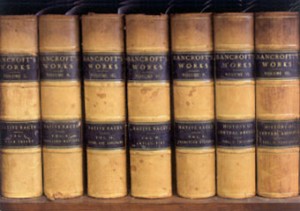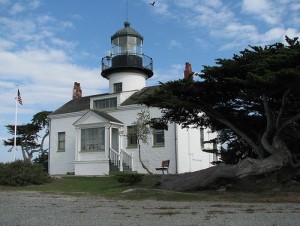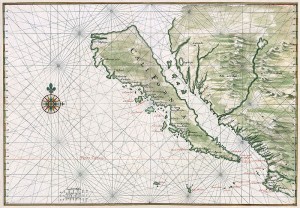 Last year I spent a lot of time researching California’s El Camino Real. I was trying to discover the original route, hoping to retrace it on a bike ride with my fourth-grade son, Kazu. What I eventually discovered was that ECR is a fiction, but more about that elsewhere. The point here is that in the process I read a lot of what I guess I would call popular histories. My interests strayed, as interests will do, and I wandered into such topics as stagecoach history in California (which expanded to the history stagecoach travel west of the Mississippi) settler abductions, Quantrill and his raiders, and other more-or-less related areas.
Last year I spent a lot of time researching California’s El Camino Real. I was trying to discover the original route, hoping to retrace it on a bike ride with my fourth-grade son, Kazu. What I eventually discovered was that ECR is a fiction, but more about that elsewhere. The point here is that in the process I read a lot of what I guess I would call popular histories. My interests strayed, as interests will do, and I wandered into such topics as stagecoach history in California (which expanded to the history stagecoach travel west of the Mississippi) settler abductions, Quantrill and his raiders, and other more-or-less related areas.
As I picked up books and read them, I noticed a trend toward hyperbole. The more recent the book, the more exaggerated its title and contents. One example is “Empire of the Summer Moon: Quanah Parker and the Rise and Fall of the Comanches, the Most Powerful Indian Tribe in American History,” by S.C. Gwynne. The title should have tipped me off. But as I had just read about Quanah Parker in a settler-adduction book (his mother was kidnapped settler Cynthia Ann Parker, sometimes cited as the source story for the John Wayne movie The Searchers), and had a predisposition to thinking the Apaches were the toughest guys around (based on Elmore Leonard westerns), I thought I’d give it a shot.
Empire of the Summer Moon begins in prose that is, well, embarrassing:
Cavalry men remember such moments: dust swirling behind the pack mules, regimental bugles shattering the air, horses snorting and riders’ tack creaking through the ranks, their old company song rising on the wind: “Come home John! Don’t stay long Come home soon to your own Chick-a-biddy!”
So, yeah, I should have known then that this wasn’t really going to be much of a history. The book was absurd enough that I thought about writing a full review of it to warn others; but after reading all the one-star reviews in Amazon, I found other readers had already covered anything I would have said, and had done it better. (Note: I’ve found some really wonderful one-star reviews in Amazon; they often seem to be the most interesting and useful reading.)
Anyway, to get to the point, I finally decided to cut out all the crap and go straight to the source. So last week, I checked out Volume I of H.H. Bancroft’s seven volume History of California, published between 1884-90. And so far, I have to say that it is for the most part refreshingly low-key, if not always crystal clear.
But as I read, it struck me that some conjectures Bancroft made “ what, 130 years ago? “ might have been refuted by more recent discoveries. So I went back and picked up a copy of “California: A History” by Kevin Starr. Something I thought would be a decent book written by a reputable author. And it may turn out to be okay, but Jesus Christ. The Preface sounds like it came out straight from one of the those California commercials a few years back that featured the Governator:
Where did it come from “ this nation-state, this world commonwealth, this California? How did an American state, one in fifty, rise to such global stature, with its $1.5 trillion economy making it, in 2005, the fifth-ranked economy on the planet? Never before in human history, it could be argued . . .
Etcetera, etcetera, blah, blah, blah.
In contrast, Bancroft’s Preface makes the same case a little more eloquently, IMO:
The past of California, as a whole and in each successive phase, furnishes a record not excelled either in variety or interest by that of any New World province.
Anyway, my plan is to read these side-by side. At least through the Bear Flag Revolt and the Treaty of Guadalupe Hildago. I sort of lose interest once gold is discovered and people flood in and and the rest becomes, you know, history.
[Afterthought: Does anyone ever admit that their subject is anything less than epic? I mean, what claim of magnificence does the historiographer of, say, Nevada have?]

